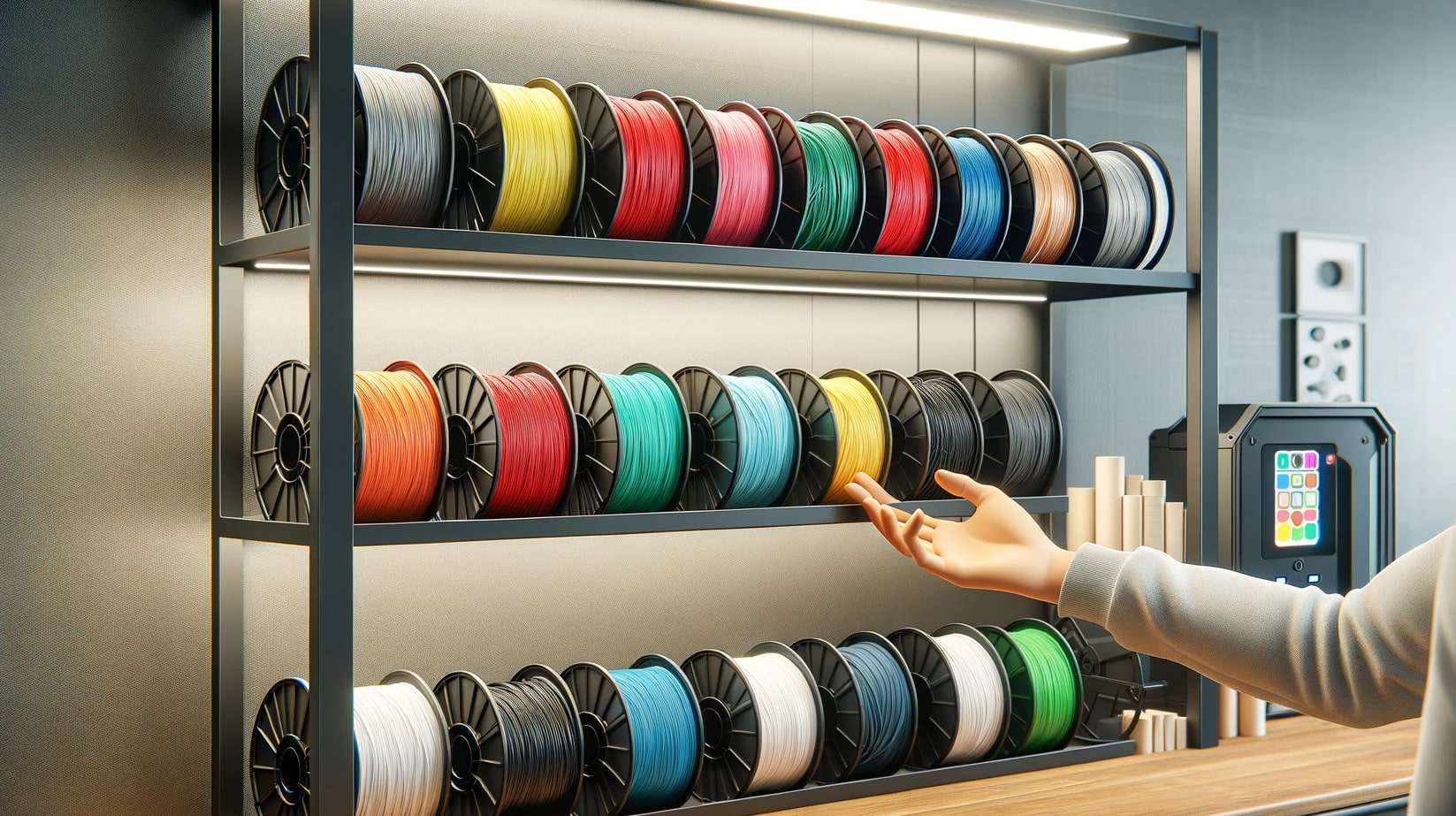
In this article, we delves into key 3D printing materials, spotlighting metal's role in aerospace and automotive, and ABS's versatility in consumer goods. It also briefly discusses Nylon, PLA, and Resin, showcasing their varied applications in advancing the 3D printing field.
Explore the Popular 3D Printing Materials: Metal, ABS, and More
Thanks to advancements in materials and capabilities, 3D printing has already brought about significant and lasting changes across various industries. This amazing technology is broadening the scope of what can be produced, especially in healthcare. Innovations include additively manufactured skin, titanium bones and joints, and even blood vessels.
At the same time, the construction sector is experiencing even more advanced innovations, showing substantial potential to revolutionize the industry.
Popular 3D Printing Materials
3D printing has revolutionized manufacturing by offering a variety of materials that can be transformed into tangible objects. options, metals and ABS (Acrylonitrile Butadiene Styrene) stand out prominently. Each material offers unique properties and applications, contributing to various industries.
Let’s get started on the first popular 3D printing material, metal.
Metal
The use of metal in 3D printing has emerged as a game-changer in manufacturing. Its ability to produce intricate, durable, and high-strength components has significantly impacted aerospace, automotive, healthcare, and beyond.
Versatility
The versatility of metal 3D printing stems from its compatibility with various metals—titanium, stainless steel, aluminum, and cobalt-chrome, among others. Each metal confers specific properties, catering to a wide range of applications. For instance, titanium's lightweight, high strength, and corrosion resistance make it ideal for aerospace parts.
Precision Engineering
The precision achievable with metal 3D printing surpasses conventional manufacturing methods. Complex geometries, intricate designs, and customized parts are fabricated with unparalleled accuracy, minimizing material waste and maximizing efficiency.
Applications
Metal 3D printing finds applications in diverse sectors. In healthcare, it enables the fabrication of patient-specific implants, enhancing compatibility and reducing rejection risks. The automotive industry utilizes it for rapid prototyping and producing lightweight components, enhancing fuel efficiency.
Service Accessibility
The advent of metal 3D printing services has democratized access to this technology. Companies offering metal 3D printing services facilitate industries and individuals to create outstanding components without the need for in-house manufacturing capabilities.
ABS
ABS, a thermoplastic polymer, has established its significance in 3D printing due to its resilience and versatility.
Strength and Flexibility
ABS possesses robust mechanical properties, making it suitable for creating durable prototypes and end-use parts. Its flexibility allows for intricate designs without compromising strength, making it a preferred choice in various industries.
Wide Applications
Its adaptability finds application in various fields, including automotive components, consumer goods, and electronics. From manufacturing casings and housings to creating functional prototypes, ABS proves its versatility across diverse domains.
Surface Finish and Post-Processing
ABS exhibits an excellent surface finish, conducive to post-processing techniques like sanding, painting, or chemical smoothing, enabling the creation of aesthetically appealing end products.
Beyond Metal and ABS
While metal and ABS steal the spotlight, numerous other 3D printing materials contribute significantly to the industry's evolution, such as the following:
Nylon
Renowned for its durability and flexibility, nylon is preferred for creating strong, lightweight parts. Its resistance to abrasion and chemicals makes it suitable for applications requiring toughness.
PLA (Polylactic Acid)
PLA, derived from renewable resources like cornstarch or sugarcane, is biodegradable and environmentally friendly. It finds applications in prototyping, educational settings, and product design due to its ease of use and low toxicity.
Resin
Resin-based 3D printing offers high-detail output, making it ideal for intricate designs in jewellery, dental products, and artistic models. Its photochemical process produces highly precise results but requires post-curing for optimal strength.
All in All
The evolution of 3D printing materials has redefined boundaries and manufacturing capabilities across industries. While metal offers unparalleled strength and precision, ABS brings resilience and versatility to the table. However, the wide range of materials, from nylon to resin, ensures that every specific need and application finds a suitable match.
As metal 3D printing services become more accessible, possibilities expand, offering businesses and individuals the opportunity to revolutionize their manufacturing processes and create innovative, customized products.
For further details about 3D printing services, feel free to get in touch with our helpful and friendly personnel.
